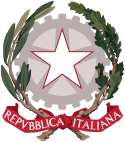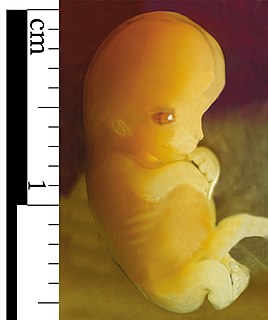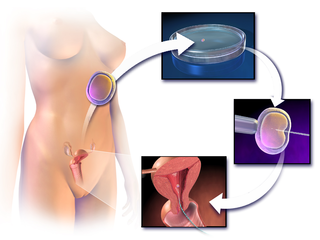
A constitutional referendum was held in Russia on 12 December 1993. The new constitution was approved by 58.4% of voters, and came into force on 25 December.

A constitutional referendum was held in France on 5 May 1946. Voters were asked whether they approved of a new draft Constitution proposed by the Constituent Assembly elected in 1945.

A constitutional referendum was held in France on 13 October 1946. Voters were asked whether they approved of a new constitution proposed by the Constituent Assembly elected in June. Unlike the May referendum, which saw a previous constitutional proposal rejected, the new constitution was accepted by 53.2% of voters, and brought the French Fourth Republic into existence. Voter turnout was 67.6%.

A constitutional referendum was held in France on 8 May 1870. Voters were asked whether they approved of the liberal reforms made to the constitution since 1860 and passed by the Sénatus-consulte on 20 April 1870. The changes were approved by 82.7% of voters with an 81.3% turnout. However, France's defeat in the Franco-Prussian War caused the Empire to be abolished later that year. Despite this being the ninth constitutional referendum in French history, it was the first to have more than 8% oppose the motion, and one of only four to have less than 99% official approval.

Five referendums were held in Liechtenstein during 1992. The first was held on 15 March on whether referendums should be introduced to approve international treaties, and was approved by 71.4% of voters. The second on 28 June concerned lowering the voting age from 20 to 18, but was rejected by 56.3% of voters. Two were held on 8 November on abolishing the 8% electoral threshold and adding a clause to the constitution banning discrimination, both of which were rejected. The fifth and final referendum on 13 December was on joining the European Economic Area. It was approved by 55.8% of voters, with a voter turnout of 87%.

A constitutional referendum was held in Poland on 25 May 1997. Voters were asked whether they approved of a new constitution. It was narrowly approved, with 53.5% voting in favour. Voter turnout was just 42.9%. Although the 1995 Referendum Act stated that a 50% turnout was required to validate the referendum, the Supreme Court ruled on 15 July that the constitution could be introduced.

A referendum on abolishing the wage escalator was held in Italy on 9 June 1985. The escalator allowed for the automatic growth of the salaries of Italian workers at the same rate as inflation. This mechanism was accused of causing high inflation which damaged the lira during the 1980s, with a 20% annual rate. Voters were asked whether they wanted to repeal a law passed by the government of socialist Prime Minister Bettino Craxi which had strongly reduced this automatic mechanisms. The referendum was called by the Italian Communist Party. Those voting "yes" wanted to restore the automatic growth of the salaries as the inflation ratio, and those voting "no" wanted to retain the law which tried to reduce the high inflation.
A four-part referendum was held in Hungary on 26 November 1989. Voters were asked whether the President should be elected after parliamentary elections, whether organisations related to the Hungarian Socialist Workers' Party should be banned from workplaces, whether the party should account for properties owned or managed by it, and whether the Workers' Militia should be dissolved. All four proposals were passed, the first narrowly by 50.1% of voters, and the remaining three by 95% of voters. Voter turnout was 58.0%.

A referendum on the electoral law was held in Italy on 9 June 1991. Voters were asked whether the clause of the law on the number of preference votes should be scrapped. The result was 95.6% in favour, with a turnout of 65.1%.

A referendum on the electoral law was held in Italy on 18 April 1999. Voters were asked whether they approved of replacing the mixed-member proportional representation electoral system with one based solely on single-member constituencies, with the 25% of seats instead allocated to the second-placed in the constituencies with the most votes. The proposal was supported by larger parties, but opposed by smaller ones. Although the proposal was approved by 91.5% of voters, turnout was only 49.6%, resulting in the referendum being invalidated as the threshold of 50% was not passed.

A seven-part referendum was held in Italy on 15 June 1997. Voters were asked whether they approved of the repealing of laws on topics including privatisation, conscientious objectors, hunting, the judiciary and journalists, as well as whether the Ministry of Agrarian Politics should be abolished. Although all seven proposals were approved by voters, the voter turnout of 30% was well below the 50% threshold and the results were invalidated.

A seven-part referendum was held in Italy on 21 May 2000. Voters were asked whether they approved of the repealing of laws on topics including election funding, the electoral system, the judiciary, employment and union dues. Although all but one of the seven proposals were approved by voters, the voter turnout of 32% was well below the 50% threshold and the results were invalidated.

A double referendum was held in Italy on 15 May 2003. Voters were asked whether small companies should be forced to re-employ workers they had sacked illegitimately and whether the property owners could refuse to allow electricity cables to be installed on private property. Although both were approved by wide margins, the voter turnout of 26% was well below the 50% threshold and the results were invalidated.

A referendum on allowing unmarried women to have fertility treatment was held in Slovenia on 17 June 2001. The proposal was rejected by 73.3% of voters, with a turnout of only 35.7%.

A referendum on privatisation was held in Slovenia on 19 January 2003. Voters were asked whether Slovenian Railways should be kept as a single company during the privatisation process and whether subscribers to Telekom Slovenije should receive a rebate for the above market price fees paid for cable TV prior to privatisation. The railways question was rejected by 51.9% of voters, whilst the Telekom proposal was approved by 77.6% of voters. Voter turnout was only 31%.

A referendum on political control of Radiotelevizija Slovenija was held in Slovenia on 25 September 2005. Voters were asked whether they approved of increasing political control of the country's public broadcaster. The proposal was approved by 50.7% of voters, although voter turnout was only 30.7%.

A referendum on the transfer of church property was held in Latvia on 1 and 2 September 1923, the first time a referendum had been held in the country. Voters were asked whether the government should be stopped from transferring the Lutheran St James's Church in Riga to the Roman Catholic Church. Although a large majority voted for the proposal, voter turnout was well below the level required, and the church building was subsequently given to the Catholic Church.

A constitutional referendum was held in Lithuania on 10 November 1996 alongside the second round of the parliamentary elections. Voters were asked whether they approved of an amendment to Article 47 of the constitution to add a paragraph allowing EU citizens to buy agricultural land. Although it was approved by 52% of those voting, voter turnout was only 39.7% and the referendum failed to pass the threshold of 50% of registered voters in favour.

A four-part referendum was held in Lithuania on 20 October 1996 alongside the first round of parliamentary elections. Voters were asked whether they approved of three amendments to the constitution and whether money from the sale of state property should be used to compensate those who lost their Soviet-era savings due to inflation. The three constitutional amendments would reduce the number of members of the Seimas, fix the date for elections to be in the spring, and to reserve at least 50% of government expenditure to social spending.
A four-part referendum was held in Switzerland on 11 May 1884. All four were rejected by voters.











